Last month, I had the opportunity to visit Japan with my two brothers. We stuck to a fairly conventional route during our two week sojourn: Tokyo-Kyoto-Osaka. But there was one detour we couldn’t miss: the Yamazaki Distillery.
It was just a 20 minute train ride from Kyoto station, conveniently en route to our final destination of Osaka. The town of Yamazaki itself is sleepy, and it was clear from the moment we disembarked that the distillery was the main draw—signs directed us to it straight from the station.
After a short walk up a dusty road, the distillery revealed itself: a large brick building, identified by the Japanese character familiar to whisky lovers the world over, and the (English) words “Suntory Yamazaki Distillery.”
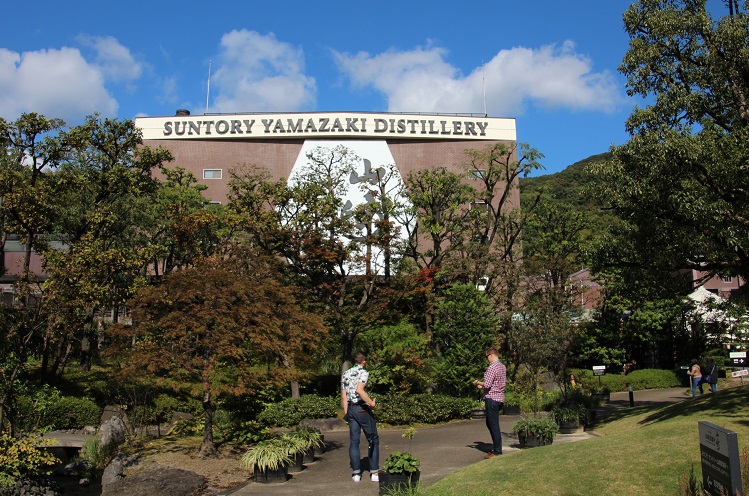
Photo: Ryan Twardzik
We were scheduled for an 11am tour, and spent our time before exploring an engrossing, museum-level exhibition dedicated to the history of Suntory Whisky. The Yamazaki Distillery was first built in 1923 by Suntory founder Shinjiro Torii, and considered to be the birthplace of Japanese Whisky. The tour itself was entirely in Japanese, but we were given audio guides with English explanations of every stop. Each sign along the tour also had an English translation, which was helpful.
Our first stop was the fermentation room, where yeast was added to filtered wort to begin the distillation process. After this, we entered the still house, where the wort produced by fermentation would be turned into distillate. An aroma of sweet apple spice hit us immediately. There were 16 pot stills in total, and we had the opportunity to see raw distillate pouring directly from the stills.

Photo: Ryan Twardzik
Following this was the barrel warehouse, where the distilled “new make” would be matched to casks to age and mature. Barrels stretched as far as the eye could see, and the warehouse smelled like the middle of a dark, wild forest: rich and musky. Several barrels placed side-by-side with a translucent panel illustrated the difference between a four-year and a 12-year whisky: the color of the 12-year was far richer and deeper.
We were invited to explore the portion of the warehouse where whisky was currently being aged in casks. These included casks made of American White Oak, and casks made of domestic Japanese wood to provide an “oriental aroma” that was “uniquely Japanese,” according to the audio tour guide. The very oldest casks dated back to 1924, shortly after the founding of the distillery itself.
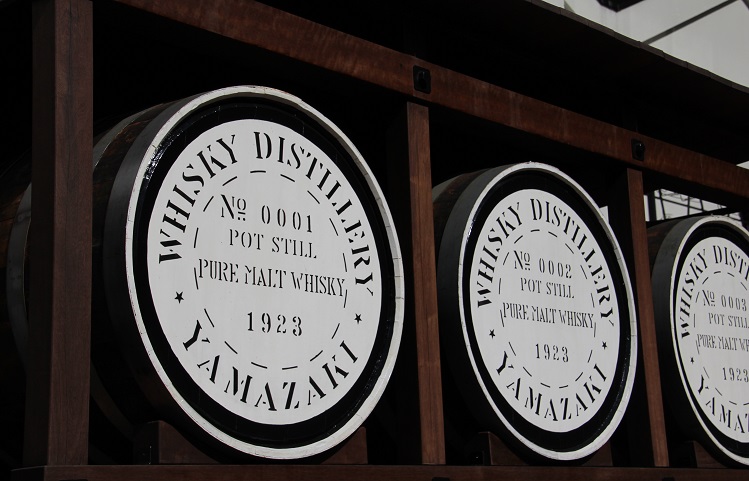
Photo: Ryan Twardzik
The next stop was distinctly Japanese: a serene bamboo grove surrounded by clear waters. This was meant to represent the natural waters available to the distillery which, according to the audio guide, is the key to the diversity of whiskies they can produce from a single distillery. The tour ended with a tasting. We were given small pours of White Oak Cask Malt, Wine Cask, and two glasses of Yamazaki Single Malt—one for sipping neatly, and one for mixing into the ideal highball.
The White Oak Cask Malt was light in color, and had a nose ripe with candy corn, caramel and candy apple. Medium in body, it contained notes of candied orange, lemon and vanilla ice cream. A light spice took hold in the middle, which dissipated into a smooth, delicate finish. Wine Cask Malt had light-medium coloring, and its nose featured notes of earth, clay, stone fruits, and something akin to silly putty. The taste featured notes of honey, cherries and clove, completed by a slow-building, subtle hint of spice at the end.
The Yamazaki Single Malt was my favorite, making the fact that it isn’t sold stateside even more of a tragedy. The medium colored spirit had a nose that featured honey and a bit of grass, and proved to be incredibly light and delicate on the tongue. This remarkably rounded, smooth whisky featured flavors of cherry, which faded into vanilla and baking spices.
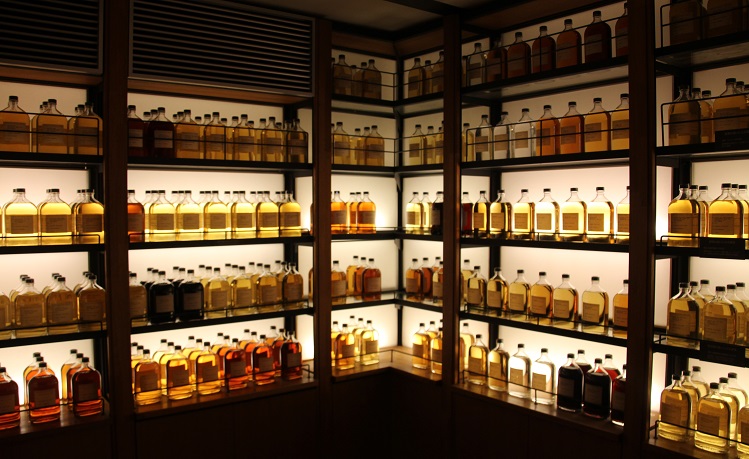
Photo: Ryan Twardzik
However, this was just the beginning of the tasting experience. The tour ended at Yamazaki’s whisky library, a beautiful chamber bedecked with hundreds of flasks containing rare whisky. Most importantly, dozens of Suntory whiskies were available by the pour, including many varieties not sold outside of Japan, or even the distillery itself. Best of all, they were available at prices that seemed ludicrously low: for my first round I selected a pour of Chita for just 100 yen (aka 86 cents) and Hibiki 21 for a miraculous 600 yen. My second round included Yamazaki 18 and the Yamazaki Puncheon Cask. For the third round I selected a Hakushu Distiller’s Reserve and a Yamazaki Mizunara Cask, which proved to be my favorite.
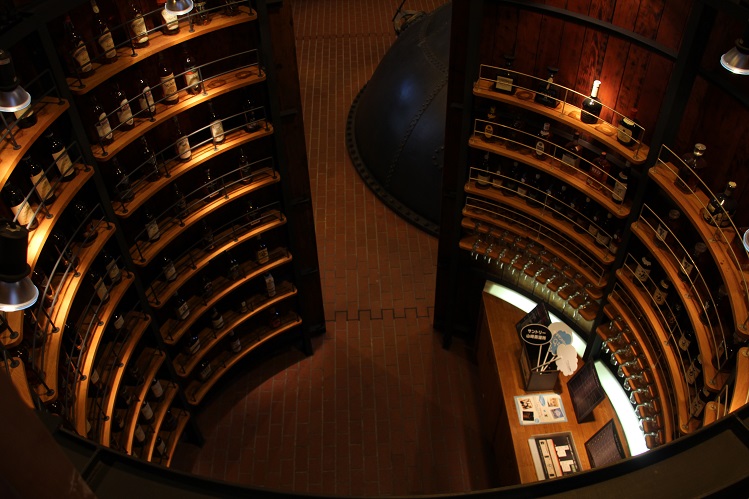
Photo: Ryan Twardzik
For the finale we shared a dram of Hibiki 30, which concluded three uninterrupted hours of blissful tippling in the library. We sauntered back to the station to catch the next train to Osaka, and dove headfirst into the nearest curry joint the moment we disembarked. I can’t say the meal of fried katsu that followed was my best in Japan, but it may have been the most satisfying. Spending an entire afternoon within the epicenter of Japanese whisky can have that effect.
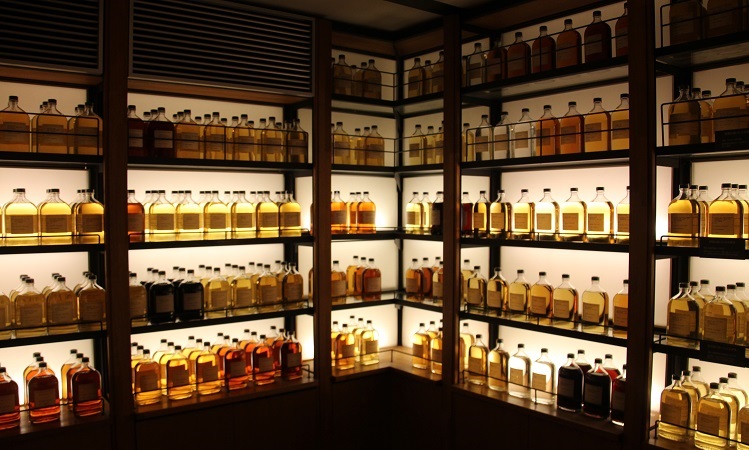



No Comments